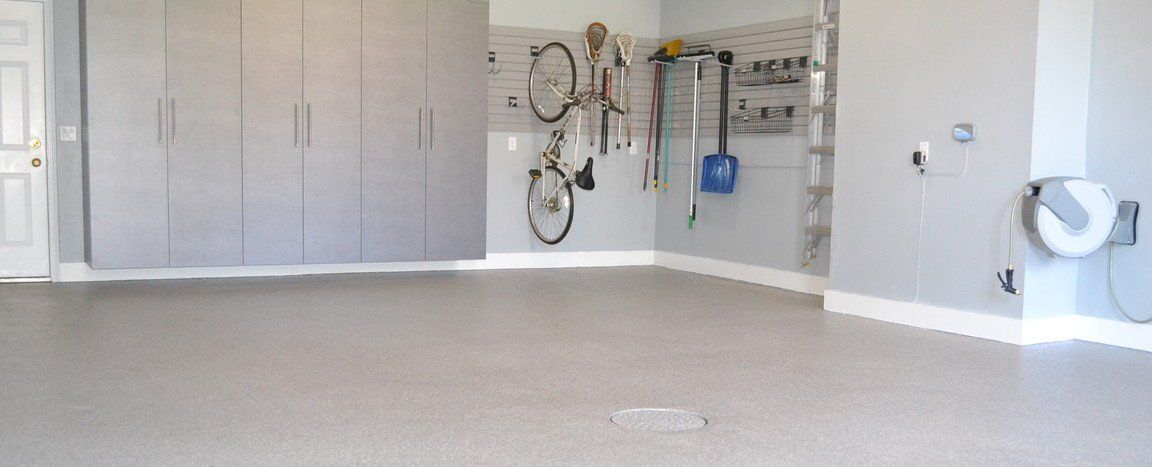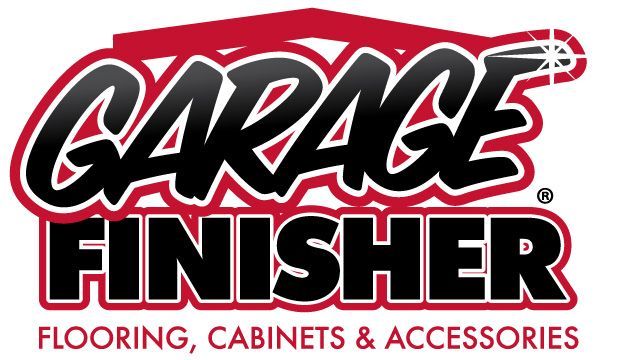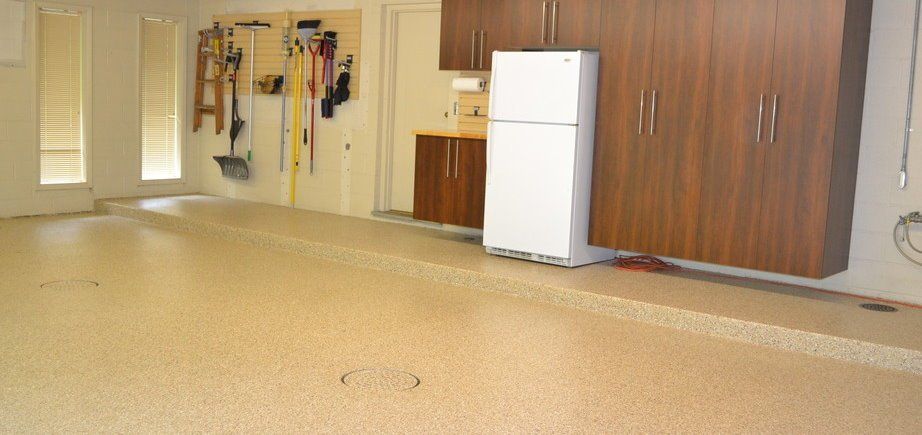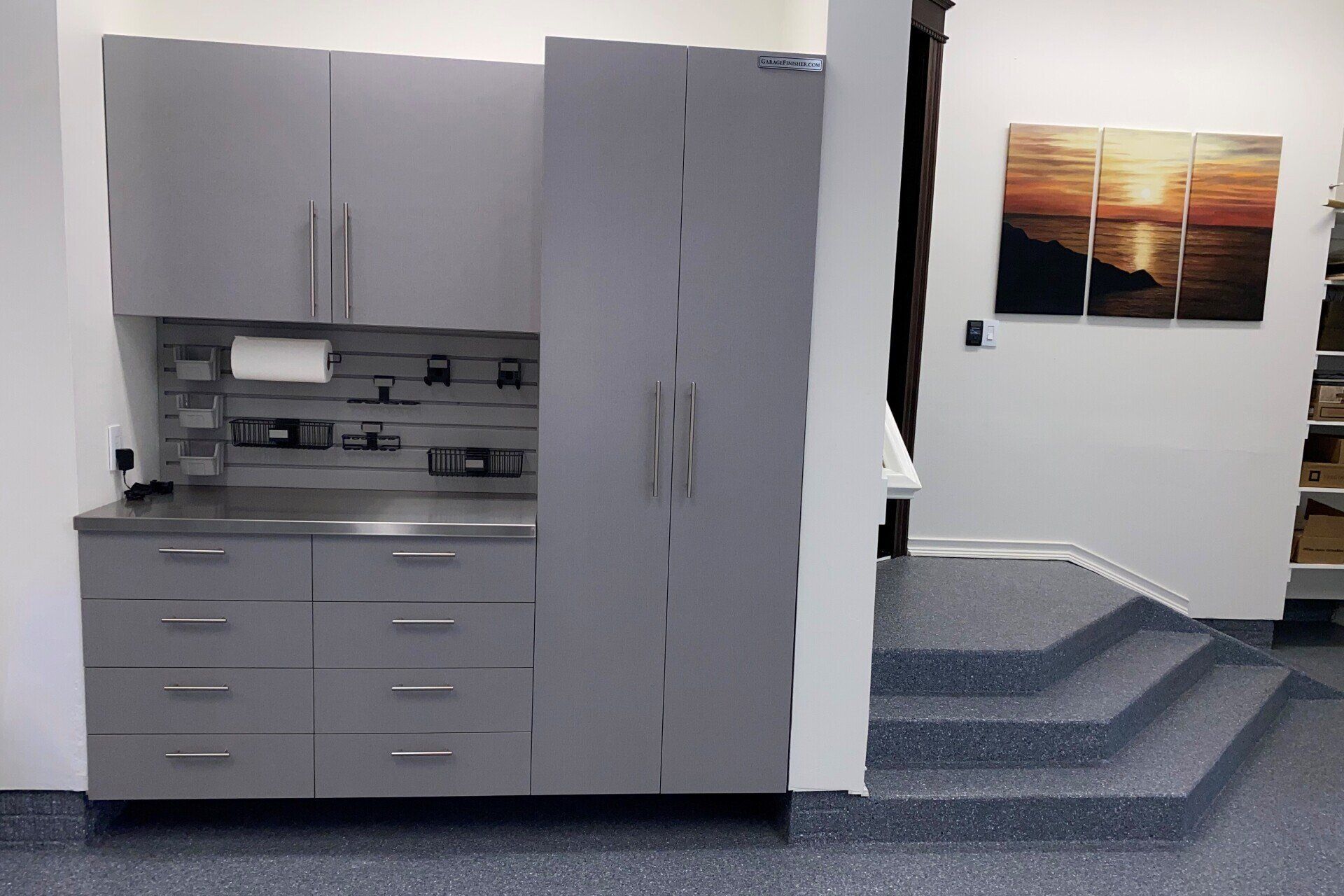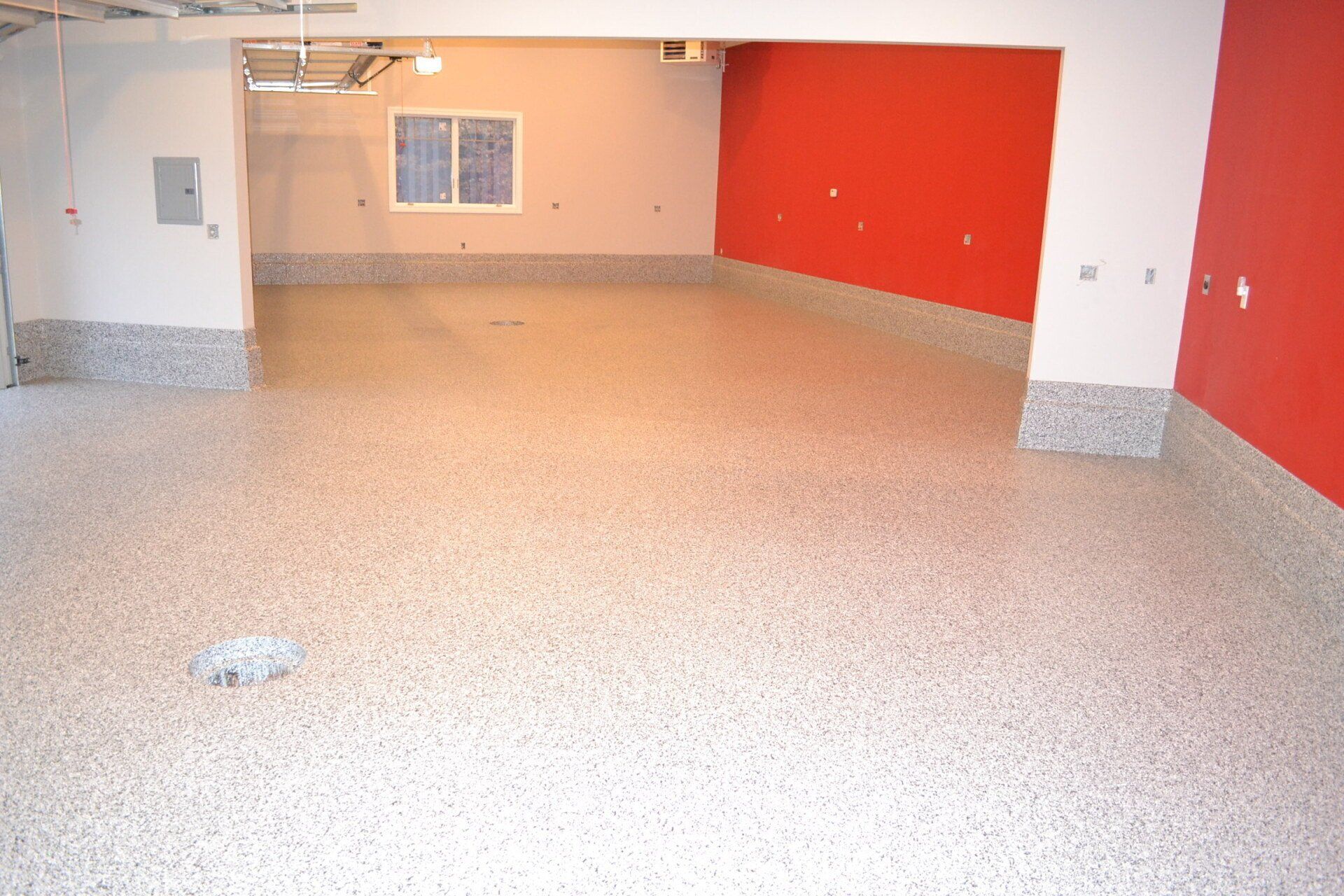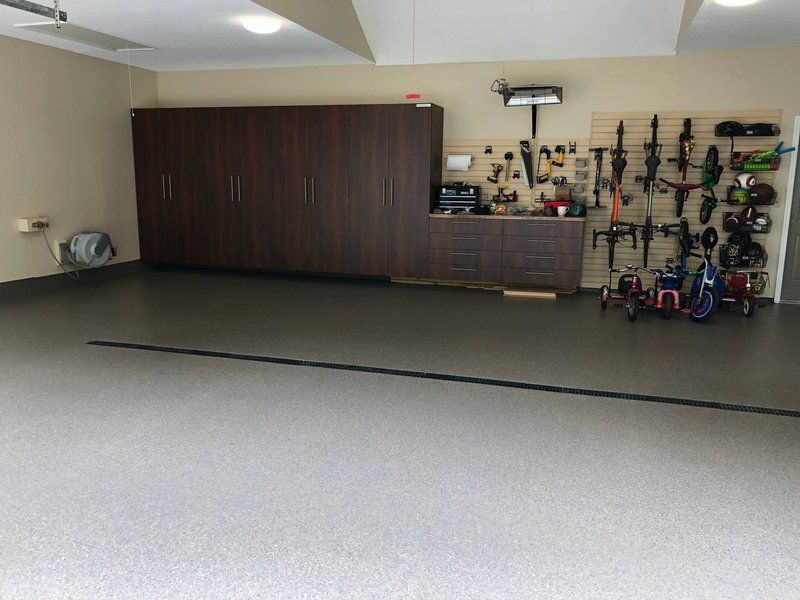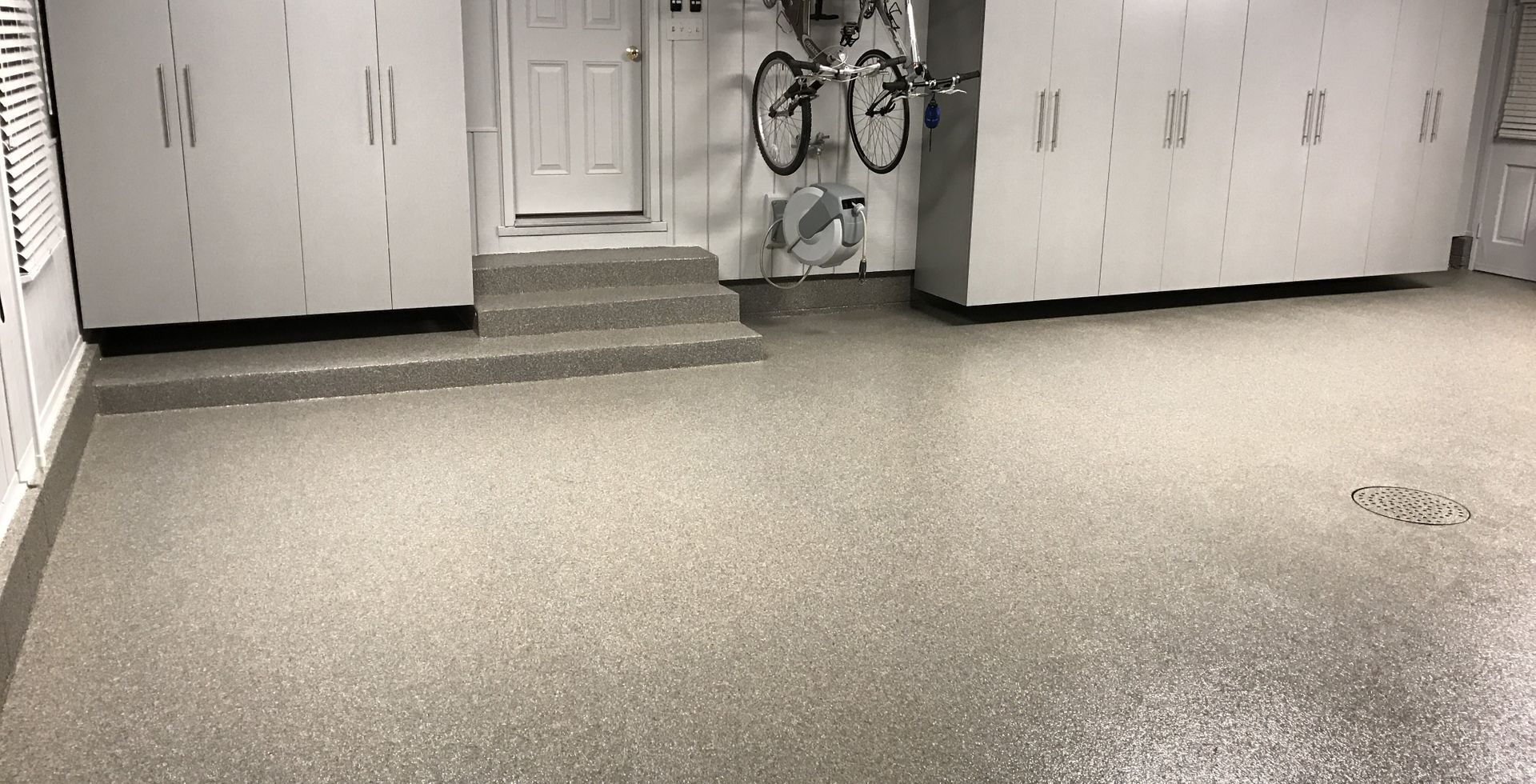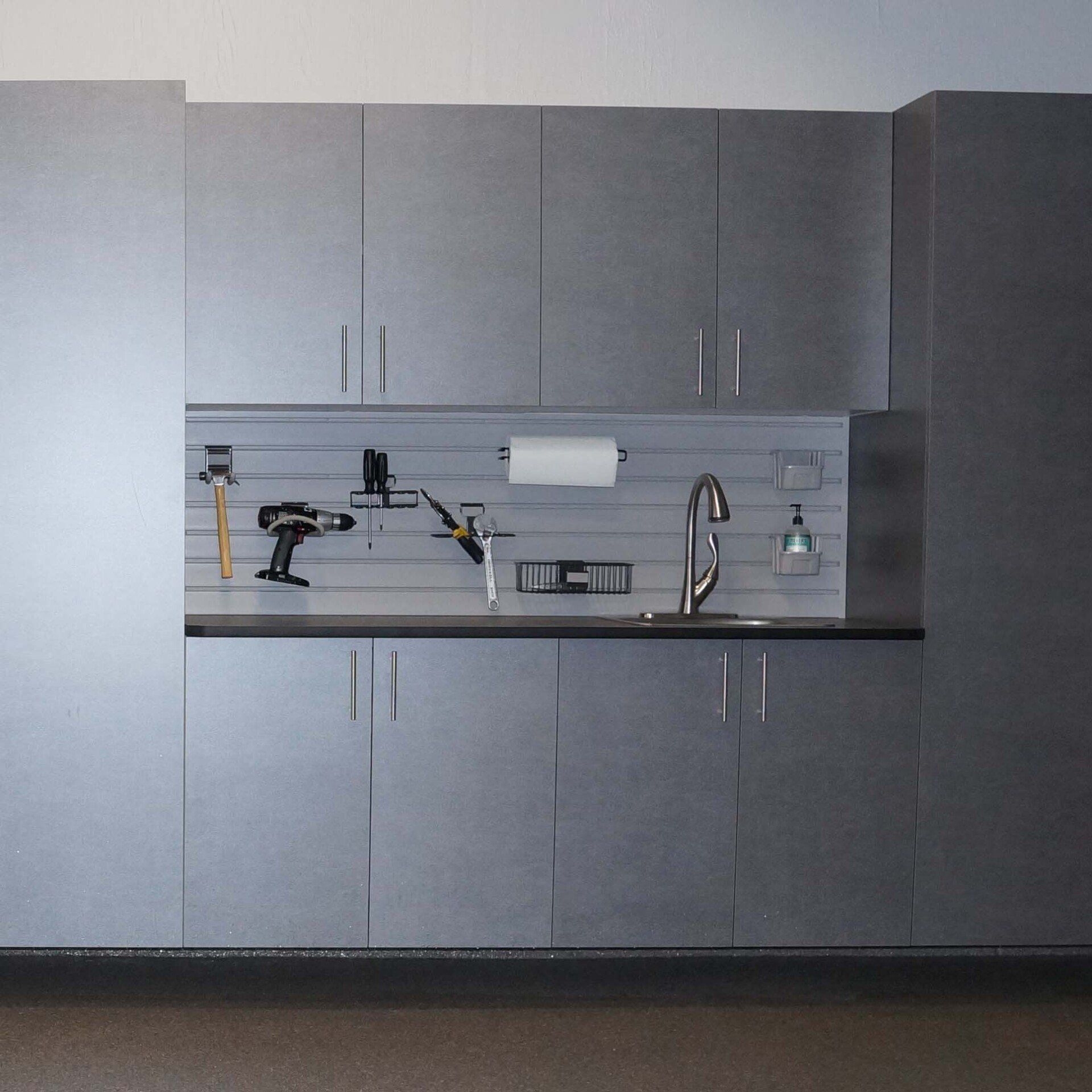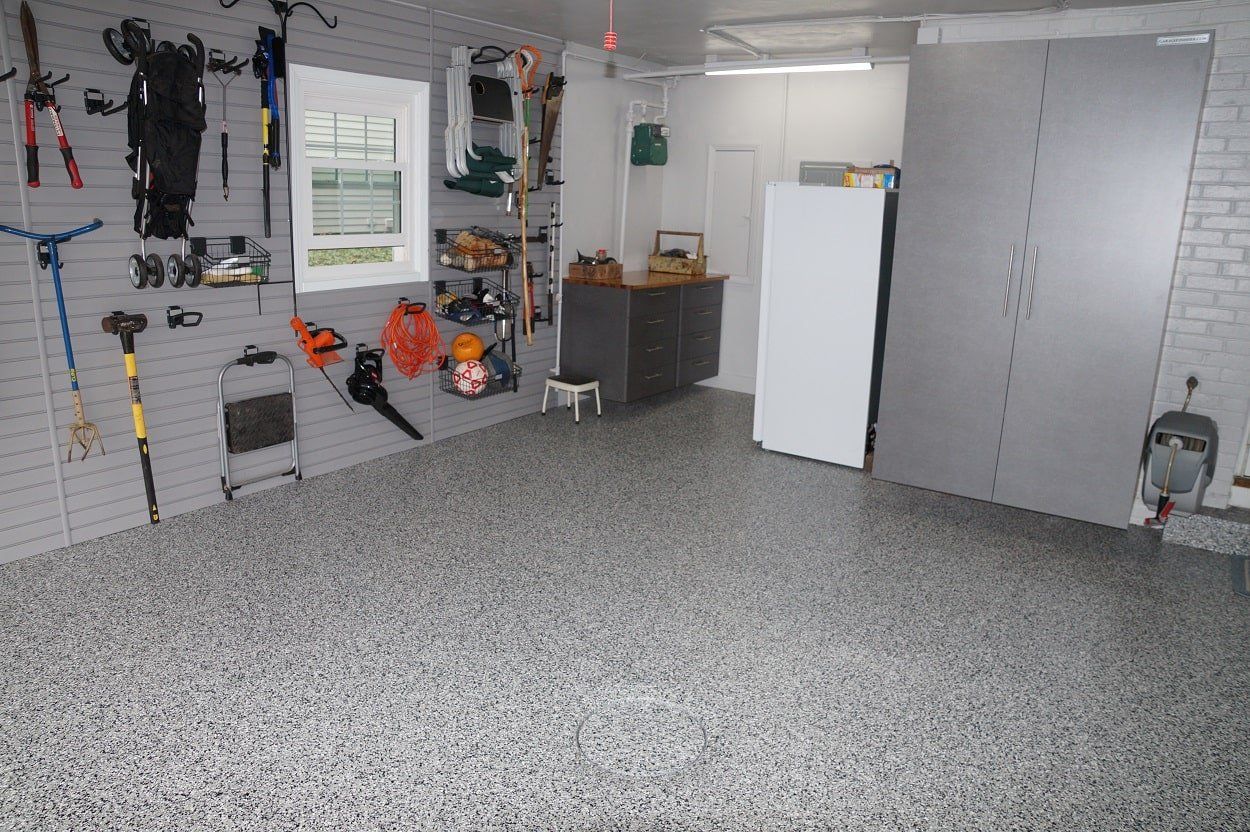Why People Are Ditching Their Nature Stone Garage Floors
For a while, one of the most popular types of garage flooring in Ohio was "nature stone," and similar mixtures of small stones and epoxy. Nature stone garage floors were seemingly everywhere, at first - until people started to notice all the problems with them. It turned out this garage flooring option wasn't the good deal it was marketed to be.
So we wanted to take a minute to talk about why you should not install a Nature Stone style stone-and-epoxy floor, and why it might be a good idea to remove and replace such floors if you already have them.
What is "Nature Stone"?
Nature Stone and similar products had a very simple premise. They created the illusion of a solid stone surface, using small pebbles suspended in old-fashioned epoxy. Since the stones were small and common, they could be obtained cheaply. Bound together by simple epoxy, they could replicate the look of much more expensive custom stonework.
But then the problems started.
The Problems with Nature Stone Garage Floors
The central problem with Nature Stone and similar systems is that they did not last and were prone to fail in multiple ways.
1. UV damage
Epoxy is a reasonably strong material for creating a floor, but the issue is that it reacts negatively to UV light - such as sunlight. Prolonged exposure first causes the epoxy to discolor, taking on an unpleasant yellow tinge. Then, if exposed to UV for long enough, the epoxy begins to weaken, leading to cracking. Since the epoxy is the only thing holding the small pebbles together once it get brittle the stones are released.
2. NOT Long-Lasting
Epoxy is strong against crushing damage and can, for example, easily hold up even heavy construction machinery. However, as epoxy ages it becomes very brittle. This led many Nature Stone-style floors to develop cracks and come apart then patching them is difficult because every batch of stone is a different color.
3. Temperature damage
Stone-and-epoxy floors were also vulnerable to temperature shifts. Because the epoxy and rocks expand and contract at different rates in response to temperature changes, rapid shifts in temperature would end up causing the rocks to loosen in place. Which, again, ultimately weakened the floor and encouraged cracks and the entire floor to fall apart. You will notice many of these companies recommending regular resealing to keep the floor intact.
3. Porous
The product is advertised to be porous and that is because the epoxy does not fill all the voids between the cheap pebble stone. What results is a floor filled with dirt and that creates excellent spaces for mold and mildew to take root in the floor. Many stone and epoxy companies recommend steam cleaning their floors to remove the embedded dirt on a regular basis, but who is going to bother doing that with their garage floor. This is the final nail in the coffin of Nature Stone for most people.
3. Slippery
The pebbles used in these types of floors have usually already been smoothed over by water over many years and then are coated with epoxy. So a smooth stone coated with smooth epoxy is only going to create a smooth, slippery surface which is unsafe when wet.
Unfortunately, for many homeowners, what was once a beautiful garage floor, is now an unsightly, filthy embarrassment. That is why so many people are having their Nature Stone floors removed and replaced with a far superior polyaspartic floor.
Replace Your Ohio Nature Stone Flooring with Something Better!
Garage Finisher is Northeast Ohio's master garage flooring experts! If you have a stone-and-epoxy floor, we know how to safely remove it and discard it without damaging the concrete below. Then we can replace it with our own proprietary Forever Floor - a five-layer polyaspartic resinous blend that can easily last the lifetime of your home or business. It's the strongest, cleanest, longest -asting garage flooring you can find in Ohio or anywhere else.
Contact us to learn more about polyaspartic flooring options.
